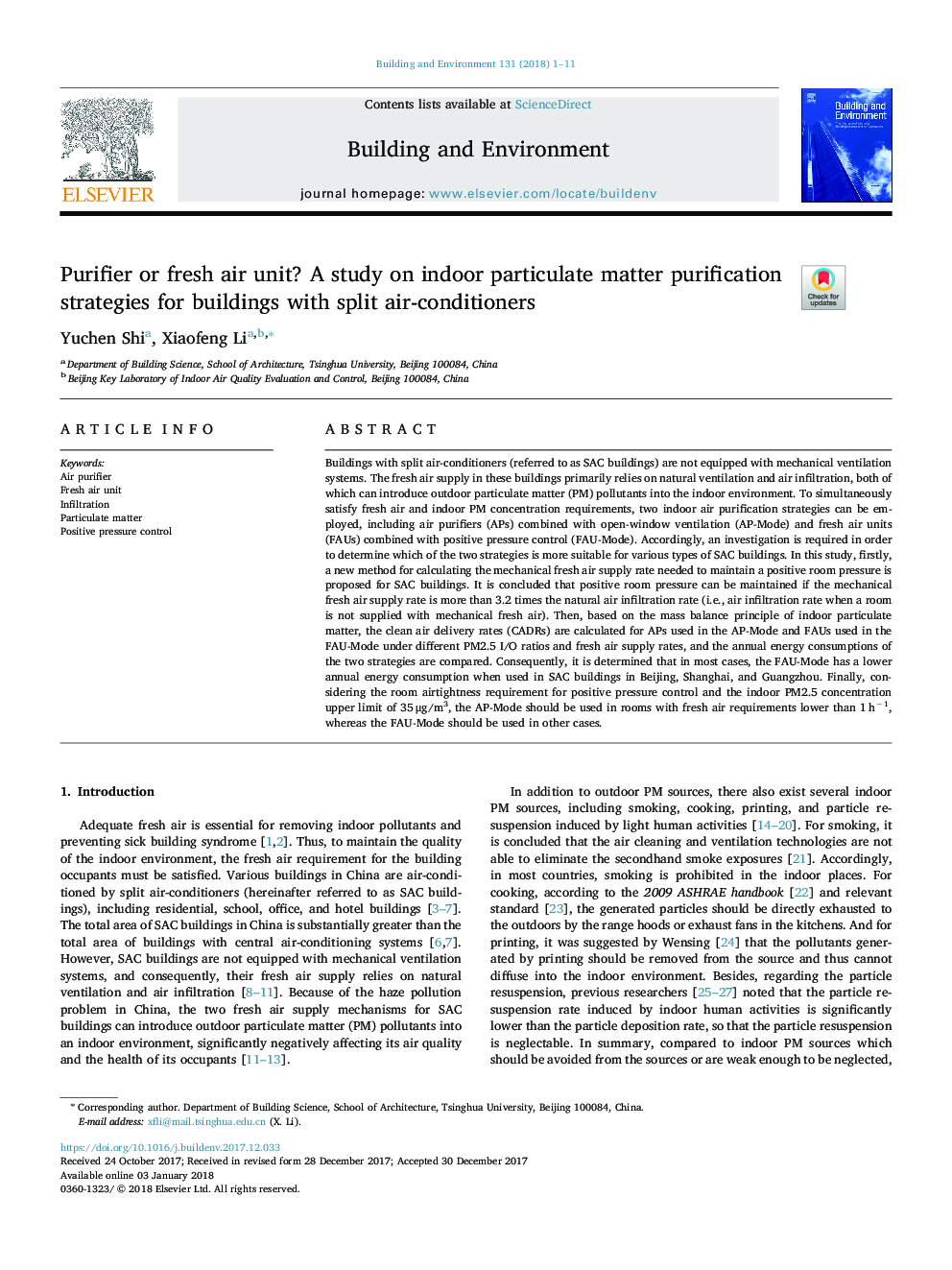| کد مقاله | کد نشریه | سال انتشار | مقاله انگلیسی | نسخه تمام متن |
|---|---|---|---|---|
| 6697988 | 1428361 | 2018 | 11 صفحه PDF | دانلود رایگان |
عنوان انگلیسی مقاله ISI
Purifier or fresh air unit? A study on indoor particulate matter purification strategies for buildings with split air-conditioners
ترجمه فارسی عنوان
تصفیه کننده یا واحد هوای تازه؟ تحقیق در مورد استراتژی های تصفیه ذرات درونی ساختمان برای ساختمان های با تهویه مطبوع تقسیم شده
دانلود مقاله + سفارش ترجمه
دانلود مقاله ISI انگلیسی
رایگان برای ایرانیان
کلمات کلیدی
تصفیه کننده هوا، واحد هوای تازه، نفوذ، ذرات جامد، کنترل فشار مثبت،
موضوعات مرتبط
مهندسی و علوم پایه
مهندسی انرژی
انرژی های تجدید پذیر، توسعه پایدار و محیط زیست
چکیده انگلیسی
Buildings with split air-conditioners (referred to as SAC buildings) are not equipped with mechanical ventilation systems. The fresh air supply in these buildings primarily relies on natural ventilation and air infiltration, both of which can introduce outdoor particulate matter (PM) pollutants into the indoor environment. To simultaneously satisfy fresh air and indoor PM concentration requirements, two indoor air purification strategies can be employed, including air purifiers (APs) combined with open-window ventilation (AP-Mode) and fresh air units (FAUs) combined with positive pressure control (FAU-Mode). Accordingly, an investigation is required in order to determine which of the two strategies is more suitable for various types of SAC buildings. In this study, firstly, a new method for calculating the mechanical fresh air supply rate needed to maintain a positive room pressure is proposed for SAC buildings. It is concluded that positive room pressure can be maintained if the mechanical fresh air supply rate is more than 3.2 times the natural air infiltration rate (i.e., air infiltration rate when a room is not supplied with mechanical fresh air). Then, based on the mass balance principle of indoor particulate matter, the clean air delivery rates (CADRs) are calculated for APs used in the AP-Mode and FAUs used in the FAU-Mode under different PM2.5 I/O ratios and fresh air supply rates, and the annual energy consumptions of the two strategies are compared. Consequently, it is determined that in most cases, the FAU-Mode has a lower annual energy consumption when used in SAC buildings in Beijing, Shanghai, and Guangzhou. Finally, considering the room airtightness requirement for positive pressure control and the indoor PM2.5 concentration upper limit of 35â¯Î¼g/m3, the AP-Mode should be used in rooms with fresh air requirements lower than 1â¯hâ1, whereas the FAU-Mode should be used in other cases.
ناشر
Database: Elsevier - ScienceDirect (ساینس دایرکت)
Journal: Building and Environment - Volume 131, March 2018, Pages 1-11
Journal: Building and Environment - Volume 131, March 2018, Pages 1-11
نویسندگان
Yuchen Shi, Xiaofeng Li,
